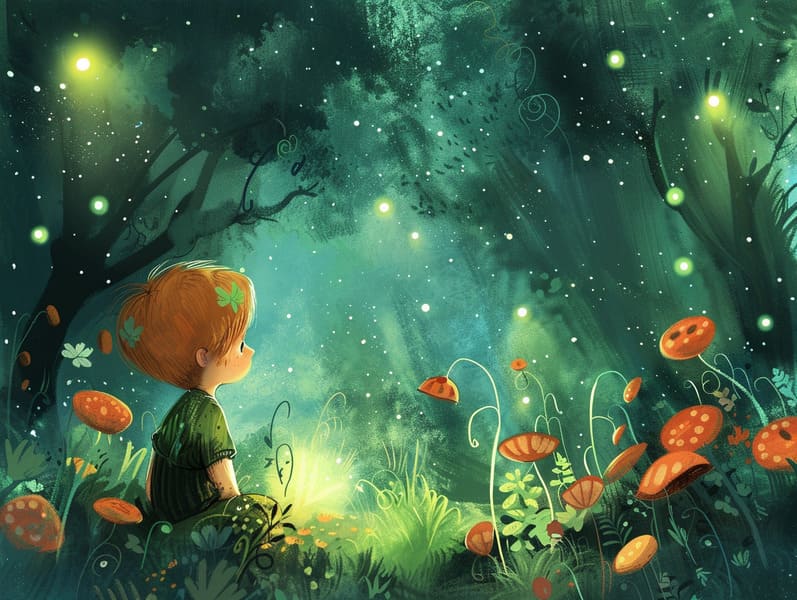
Timeless fairy tales have deep roots. These stories have been spoken from one generation to the next long before they were ever published. They sprang from a variety of traditions, including European traditions. They were initially disseminated among mature audiences, often carrying themes and messages mirroring the societal norms and beliefs of the time.
The Brothers Grimm, Jacob and Wilhelm (the Grimm brothers), were among the first to compile many of these beloved stories. Their volume, "Grimm's Fairy Tales," included classics like "Ashenputtel," "Hansel and Gretel," and "The True Story of Snow White," which have since become hallmarks in the world of iconic fairy tales. Similarly, Hans Andersen's charming stories, such as "The Mermaid's Tale," and "The Duckling that Could," have gained the love worldwide, ensuring their place in the pantheon of beloved fairy tales.
Despite their age, fairy tales remain as meaningful as ever, especially as nighttime stories for kids. These whimsical stories are now available in many formats, including vibrantly illustrated books, magical animations, and digital fairy tales.
Their enduring popularity can be connected to several magical reasons:
Moral Lessons: Classic fairy tales often offer important moral lessons. Fairy tales like "The Boy Who Cried Wolf" teach the significance of honesty, while "The Story of the Tortoise and the Hare" illustrate the merits of determination and humbleness. These tales offer children clear distinctions between ethical and unethical, helping to shape their moral compass in a tender yet lasting way.
Empathy and Awareness: Traditional fairy tales frequently depict beings facing struggles and tests, urging children to feel with their struggles and celebrate their triumphs. For instance, "Beauty and Her Beast" reveals the value of seeing beyond the surface to know the inner being of a being, building awareness and discernment.
Cultural Insights: Many classic fairy tales are interwoven with the cultural contexts from which they were born. Engaging with these fairy tales can provide enlightening views into different social structures, enhancing a sense of cultural insight and acknowledgment.
Inventiveness and Fantasy: The fantastical elements in traditional fairy tales—mythical entities—kindle children’s innovative ideas. These fairy tales transport readers to fantasy realms, revitalizing creative thinking and a sense of awe that lasts a lifetime.
Classic fairy tales are not only alluring but also didactic. They serve as mesmerizing tools in building various mental and emotional abilities in kids. When ancient fairy tales are read aloud, they improve linguistic abilities by showing new fairy tales words and intricate sentence structures. This practice also fosters listening skills and mental focus, as little ones remain attentive, keen to see what happens next.
Furthermore, examining the themes and characters of timeless fairy tales can strengthen critical thinking and thinking skills. Young ones are led to find patterns, expect results, and understand cause and effect. These reflections also boost young ones articulate their thoughts and feelings, advancing their emotional intelligence.
In today’s digital age, the abundance of digital storybooks has made these narratives more obtainable than ever. Internet resources and apps offer huge assortments of traditional fairy tales that can be viewed or listened through anytime, anywhere. Fairy tales recited are particularly in demand, presenting an interactive method for little ones to immerse in these magical stories. Read-aloud books and voiced videos carry characters and settings to life, often supplemented by fantastical melodies and background music that elevate the story journey.
The everlasting appeal of ancient fairy tales lies in their ability to change to modern society while continuing with their core values. Contemporary reimaginings of these fairy tales often present more representative figures and modern settings, making them understandable to today’s audience. However, the main ideas of gallantry, kindness, and fair play remain unchanged, continuing to reach young listeners of all ages.
Classic fairy tales also offer a sense of ease and knownness. They extend a systematic narrative with a plain beginning, middle, and end, often coming to a close with the termination of conflicts and the triumph of good over bad. This certainty can be reassuring for children, allowing a sense of steadfastness in an inconstant world.
Old fairy tales continue to spellbind and edify new generations, maintaining their appeal and relevance in modern society. As children's night stories, they bestow a perfect blend of enchantment and education, supporting moral values, empathy, and creativity. The proliferation of free fairy tales online and the prevalence of fairy tales narrated assure that these old fairy tales remain attainable to new generations.
By protecting and releasing these fairy tales, we continue to admire the rich tapestry of fables and cultural heritage. Whether you are experiencing a richly illustrated book, delving into a digital collection, or listening through an narrated book, the allure of timeless fairy tales is always within reach. These stories convey of the perpetual strength of storytelling and its ability to hold us together across time and space.
Even if you are viewing a artistically illustrated book, accessing a digital library, or listening via an narrated book, the majesty of Grimm's fairy tales is always within reach.
These narratives illustrate of the undying ability of storytelling and its ability to connect us across time and space, creating a bond that charms and informs alike.